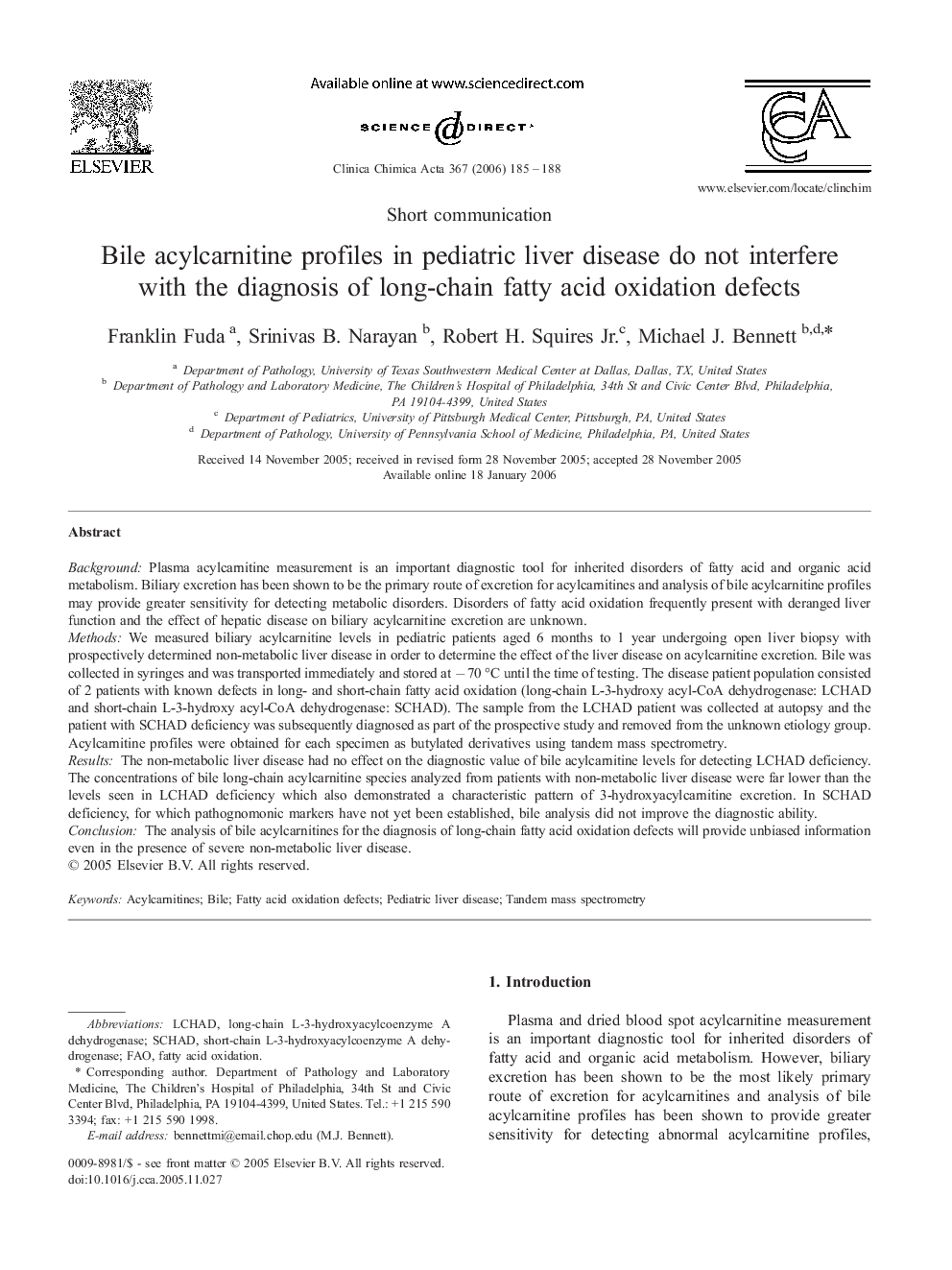| کد مقاله | کد نشریه | سال انتشار | مقاله انگلیسی | نسخه تمام متن |
|---|---|---|---|---|
| 1968100 | 1538760 | 2006 | 4 صفحه PDF | دانلود رایگان |

BackgroundPlasma acylcarnitine measurement is an important diagnostic tool for inherited disorders of fatty acid and organic acid metabolism. Biliary excretion has been shown to be the primary route of excretion for acylcarnitines and analysis of bile acylcarnitine profiles may provide greater sensitivity for detecting metabolic disorders. Disorders of fatty acid oxidation frequently present with deranged liver function and the effect of hepatic disease on biliary acylcarnitine excretion are unknown.MethodsWe measured biliary acylcarnitine levels in pediatric patients aged 6 months to 1 year undergoing open liver biopsy with prospectively determined non-metabolic liver disease in order to determine the effect of the liver disease on acylcarnitine excretion. Bile was collected in syringes and was transported immediately and stored at − 70 °C until the time of testing. The disease patient population consisted of 2 patients with known defects in long- and short-chain fatty acid oxidation (long-chain L-3-hydroxy acyl-CoA dehydrogenase: LCHAD and short-chain L-3-hydroxy acyl-CoA dehydrogenase: SCHAD). The sample from the LCHAD patient was collected at autopsy and the patient with SCHAD deficiency was subsequently diagnosed as part of the prospective study and removed from the unknown etiology group. Acylcarnitine profiles were obtained for each specimen as butylated derivatives using tandem mass spectrometry.ResultsThe non-metabolic liver disease had no effect on the diagnostic value of bile acylcarnitine levels for detecting LCHAD deficiency. The concentrations of bile long-chain acylcarnitine species analyzed from patients with non-metabolic liver disease were far lower than the levels seen in LCHAD deficiency which also demonstrated a characteristic pattern of 3-hydroxyacylcarnitine excretion. In SCHAD deficiency, for which pathognomonic markers have not yet been established, bile analysis did not improve the diagnostic ability.ConclusionThe analysis of bile acylcarnitines for the diagnosis of long-chain fatty acid oxidation defects will provide unbiased information even in the presence of severe non-metabolic liver disease.
Journal: Clinica Chimica Acta - Volume 367, Issues 1–2, May 2006, Pages 185–188